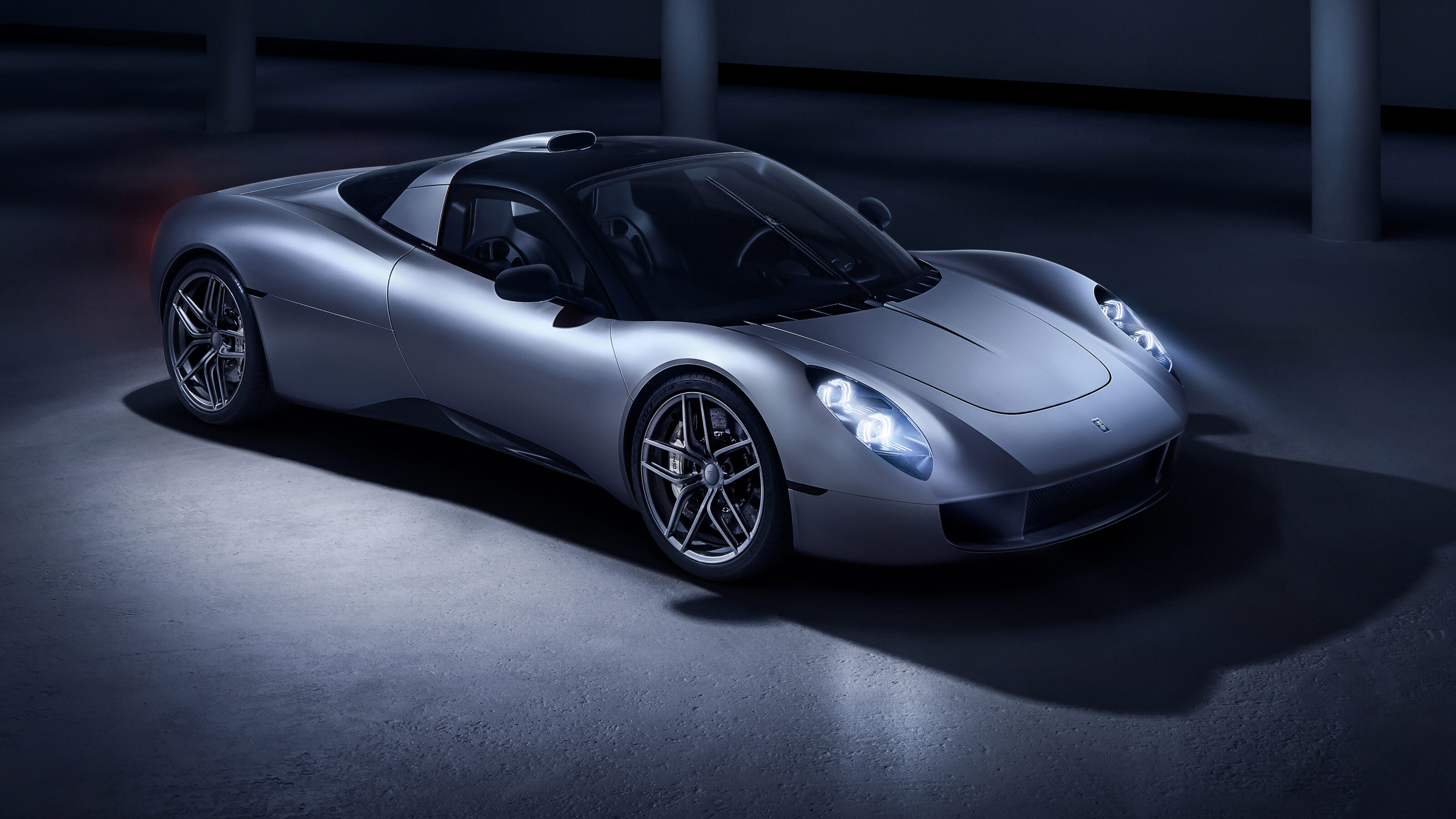UPDATE, February 7, 2022: If you wanted to buy one of Gordon Murray’s cut-price T.33s, you’re too late as GMA confirms all 100 units have been sold.
Slated to be built from 2024, GMA announced its order books were full for the T.33, with the company selling out of the “entry-level” supercar before it launched – all for over $2.6 million each.
“The entire GMA team is thrilled that all 100 T.33s have found a home so quickly after the global launch just over a week ago, and we look forward to welcoming new owners to the GMA family,” said GMA founder, Gordon Murray.
“I am extremely proud of our team who have relentlessly applied our core principles to deliver this amazing motor car.”
Read more about the latest model from GMA below.
The story to here
January 29, 2022: It took 30 years for Gordon Murray to come up with a successor to the McLaren F1.
Revealed last year, the GMA T.50, light and compact, and powered by a naturally-aspirated V12 that screams to 12,100rpm, was nothing less than the F1 remastered for the 21st century. Now, less than 12 months later, Murray has unveiled another F1 buster. Meet the GMA T.33.
The T.33 has less power and torque than the T.50, weighs slightly more, and doesn’t get that car’s central driving position or fan-forced active aerodynamics. But, says Murray, it is nonetheless a better car than the legendary F1.
“The engine’s better, the gearbox is better. It’s lighter and has a slightly better power to weight ratio. The finish and the quality are much better.”
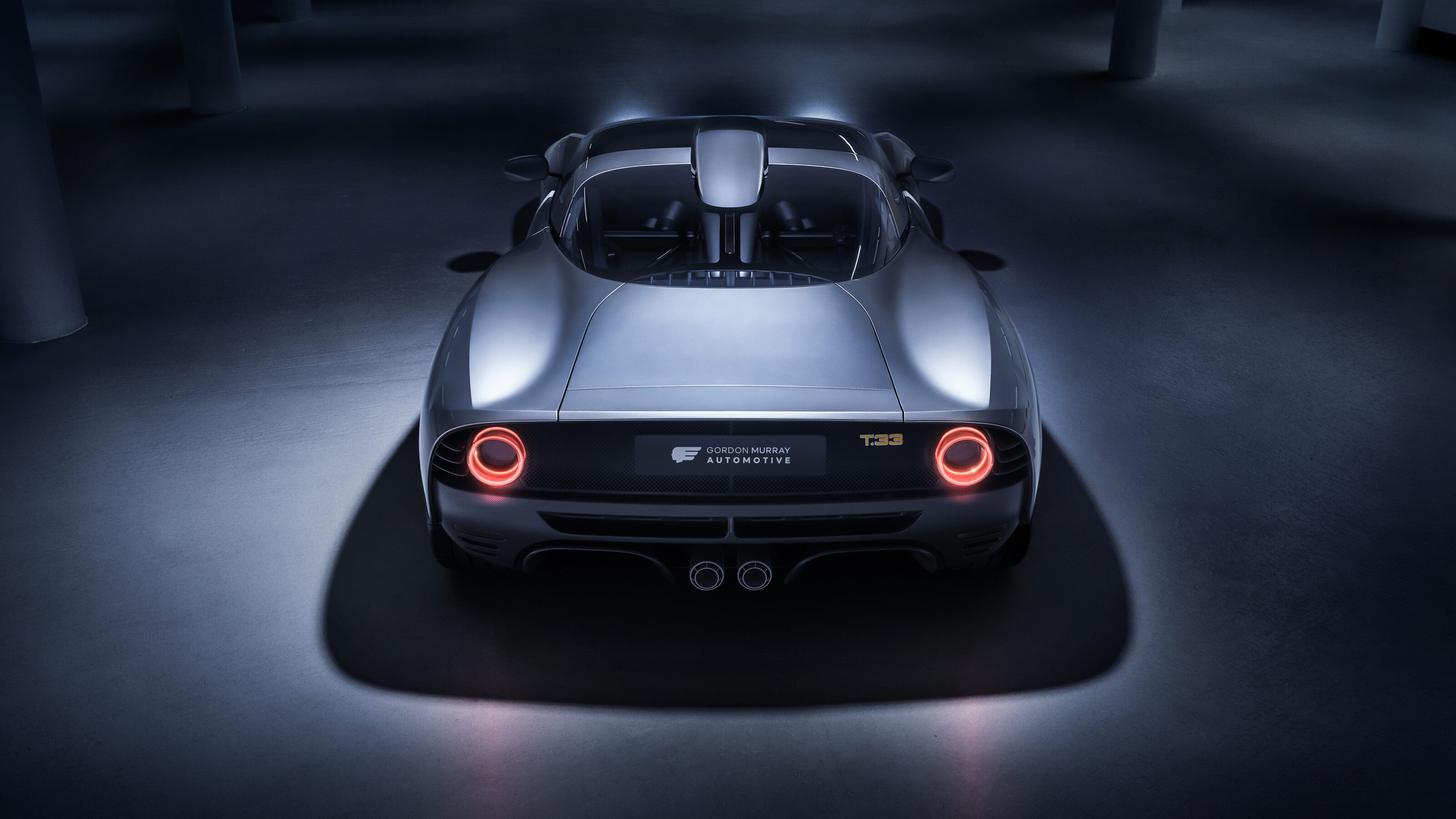
Just 100 T.33s will be built, production starting in 2024. And with a starting price of $2.6 million plus tax, it’s a bargain. Especially when you consider a McLaren F1 last year sold at auction for more than $32 million.
Murray says the T.33 is a car he’s been wanting to build for more than 25 years.
“After the F1 I thought, if I ever get the chance, I’d love to do a car influenced by all my favourite mid-engine sports cars from the 1960s. Not a retro car in any way, shape or form, but one that puts those influences into a modern shape.”
You can see the elements of cars like the Ferrari 206 SP and the Alfa Romeo 33 Stradale in the overall form and proportion of the T.33. While the central driving position of the T.50 and the McLaren F1 dictated a pronounced cab-forward layout, the T.33’s conventional driving position, which allows the pedals to be located further rearward in the chassis, means the cabin is more centrally located between the wheels.

And like those 1960s’ cars, the wasp-waisted T.33 also has a broad front air intake, pronounced haunches over all four wheels, and just the merest hint of a Kamm tail at the rear. But there’s function in all the form.
“There’s nothing just for styling’s sake on the car at all,” Murray insists. “Every single element has something to do.’’
The wide front air intake, for example, houses all the cooling hardware, which means there’s no need for unsightly and un-aerodynamic ducts in the body side. Extra cooling air is ducted into the engine compartment from under the car. The small vent at the base of the vertically stacked headlights not only sends air to the front brakes, but also allows the car to pass low speed crash requirements while echoing 1960s’ headlight graphics.
The relatively clean and simple surfacing belies some lovely design details. There are no visible door handles – access to the cabin is via touch sensitive buttons in the Gordon Murray Automotive logos at the base of the B-pillar. The fuel and oil fillers are hidden behind the panels on the pillars. There’s a lot of driveway theatre in this car, even though in photos it looks a somewhat reductive design.
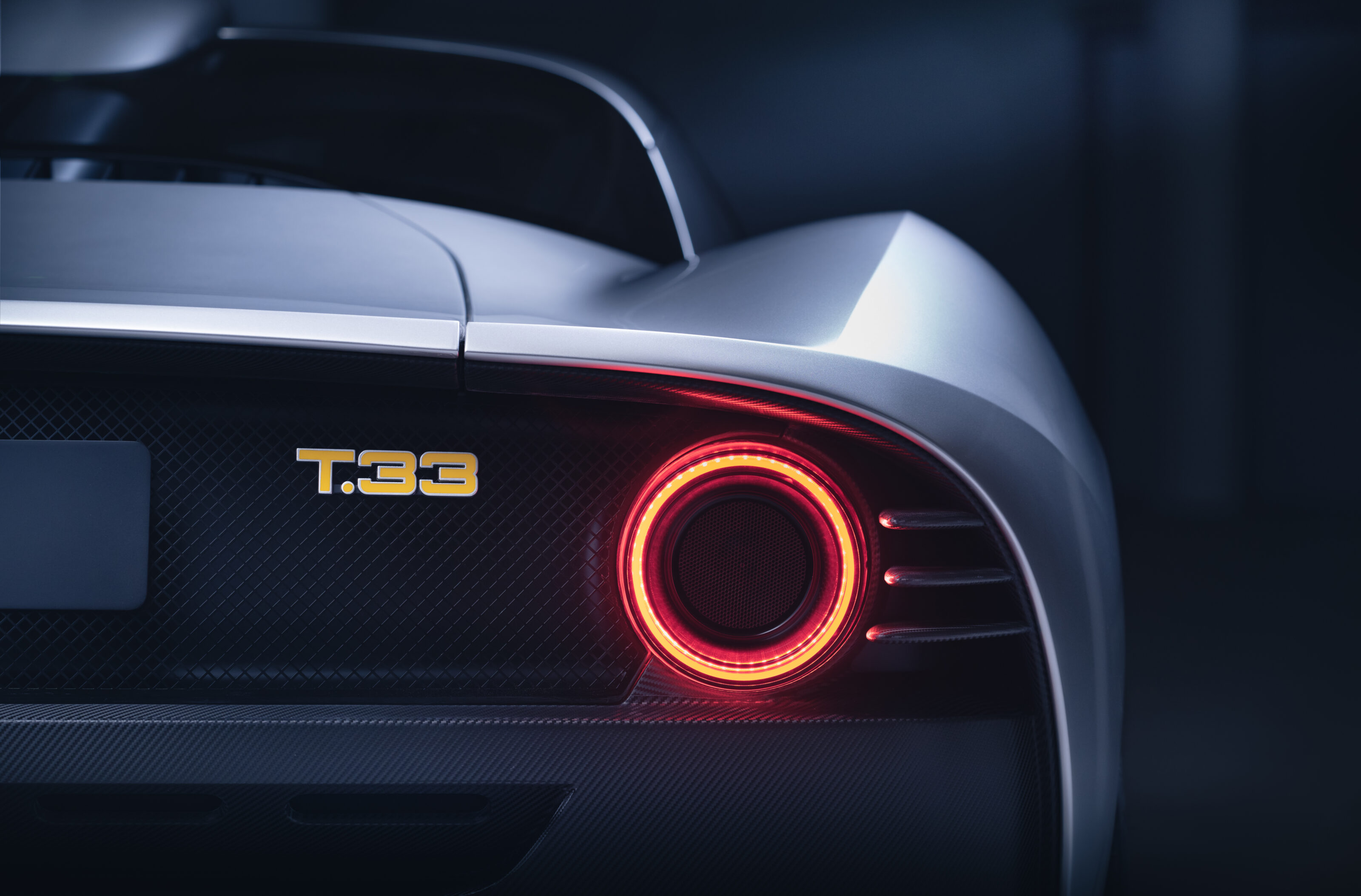
The T.33 engine shares much of its hardware with the Cosworth-developed, naturally-aspirated 4.0-litre V12 that powers the T.50. Dubbed the Cosworth GMA.2 and distinguished by its yellow cam covers (the T.50’s were orange and the more powerful T.50 Niki Lauda engine’s red) it makes 452kW at 10,500rpm and 451Nm of torque at 9000rpm, 35kW and 15Nm less than in T.50 spec, thanks to different cams, revised valve timing and engine mapping – along with new intake and exhaust systems.
The engine breathes through a ram air intake positioned above the cabin. While in other mid-engine cars such intakes are part of the bodywork, in the T.33 it’s mounted directly to the engine and stands proud of the bodywork so it can move. That eliminates the need for a flexible coupling between the engine and the intake itself, which means the internals of the entire structure can be kept perfectly smooth.
The other benefit, Murray explains, is more subtle: “If the intake is flush to the roof, you get a boundary layer buildup [of slow-moving air], which renders the bottom slice of the intake quite useless. By having the intake separate and floating above the car, we bleed off the boundary layer into the engine bay, which is low pressure, and then we can have a smaller, more aerodynamic duct.
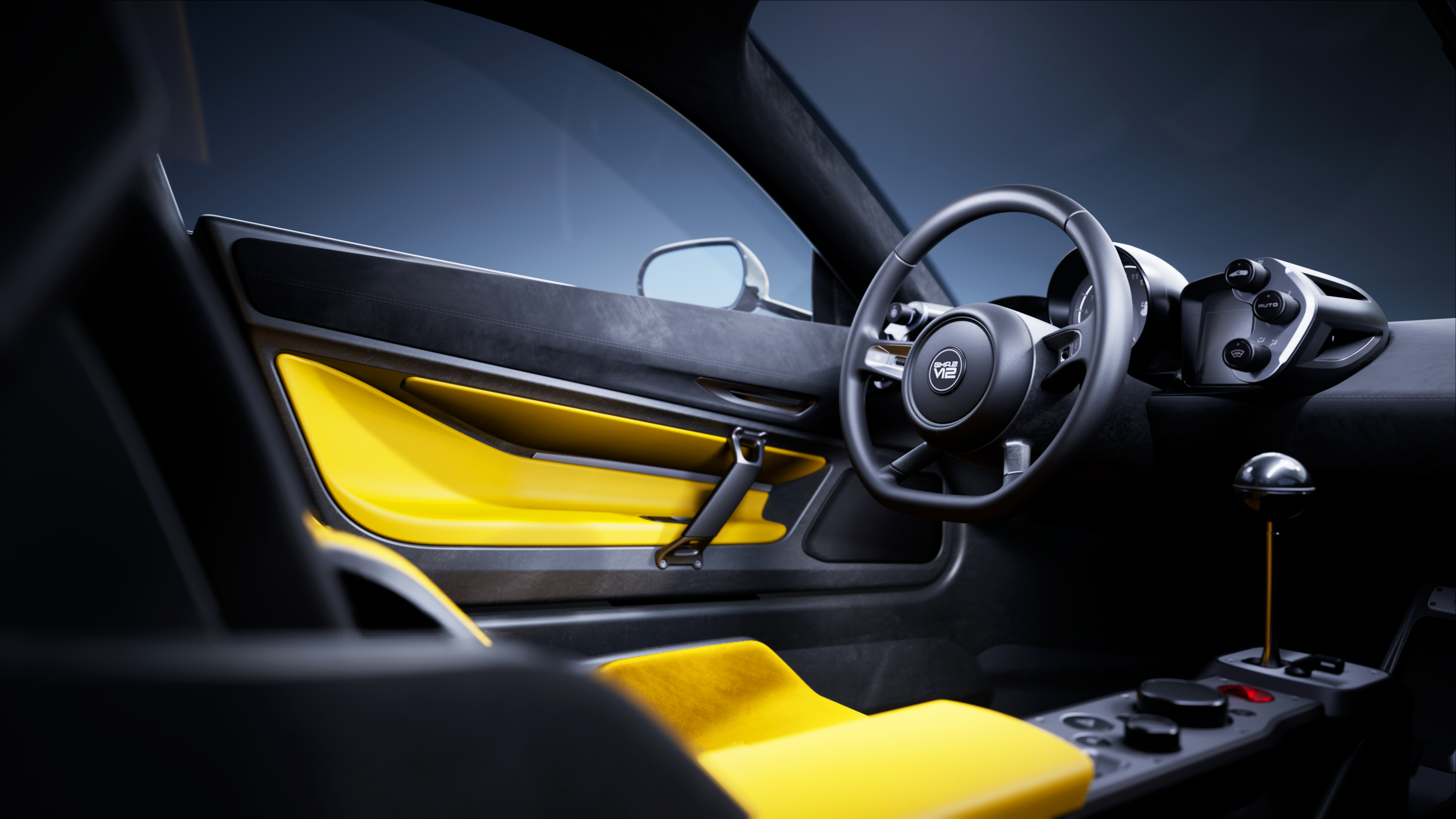
The decision to lop 1000rpm from the engine’s rev limit wasn’t just a case of ensuring differentiation between T.50 and T.33.
“To be really honest,” says Murray, “the main reason is that 12,100rpm in a 4.0-litre engine with valve springs is getting right up there on the ragged edge. Going to 11,100rpm makes much more sense.”
The other benefit is improved drivability. The T.33 version of the engine delivers 75 per cent of its peak torque at 2500rpm, and 90 per cent from 4500rpm.
The T.33’s V12 drives the rear wheels through a six-speed manual transmission that’s externally almost identical to that used in the T.50, but has a new gearset inside. Designed and developed by British motorsport specialist Xtrac, the transmission weighs just 80 kilograms.
While the T.50 was only available with a gear lever and clutch pedal, the T.33 can be ordered with Xtrac’s ingenious Instantaneous Gearchange System (IGS) paddle shift transmission. Rather than clutches, the IGS transmission has an integrated ratchet and pawl mechanism between each gear hub and the main shaft so that two consecutive gear ratios can be selected and engaged simultaneously, but with only one set of gears driving.
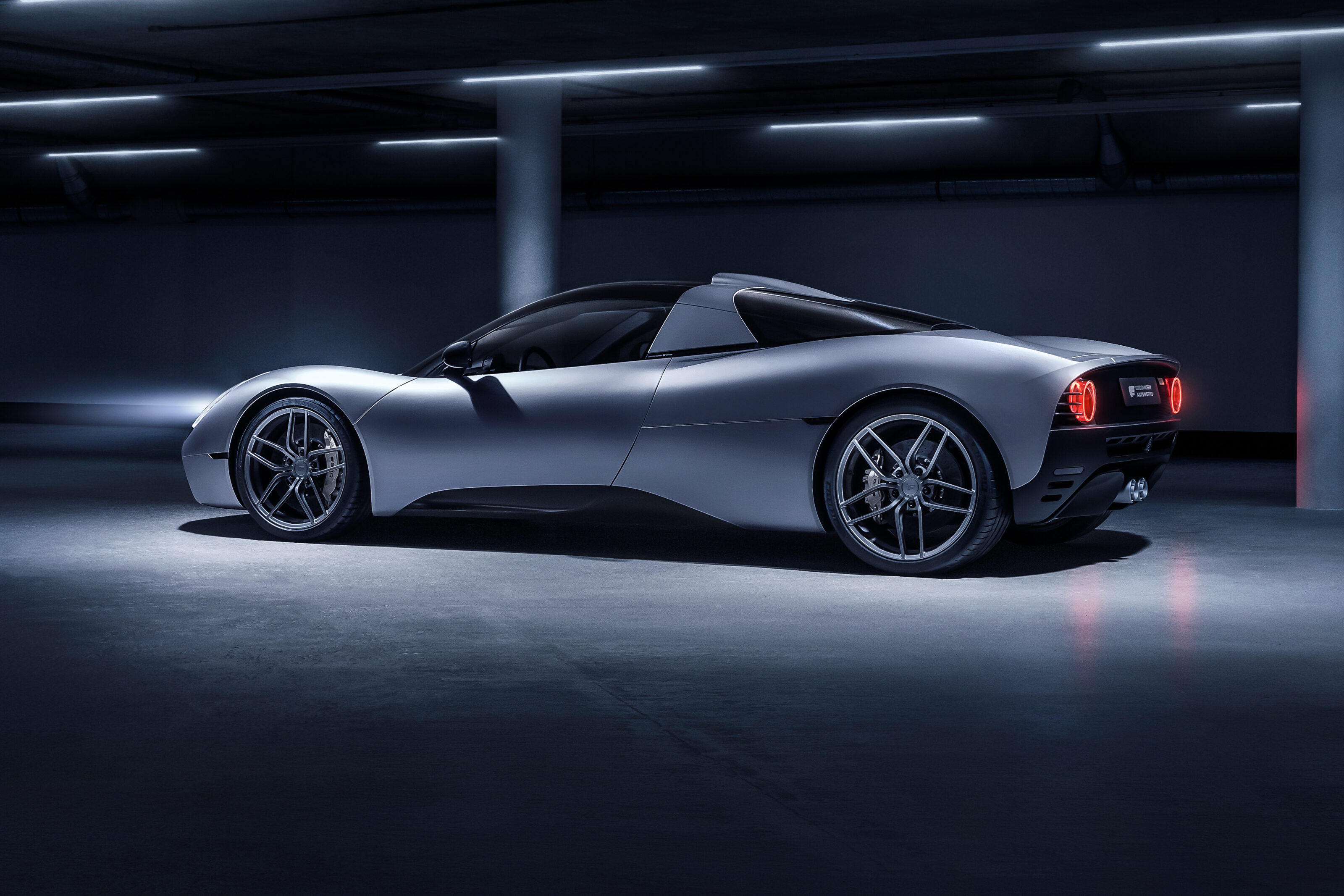
Murray says the IGS-equipped T.33 will be significantly quicker than the manual car, both in a straight line and on the track. However, of the 60 T.33s already pre-sold, only three have so far been ordered with the IGS transmission – even though 40 to 50 per cent of them are going to the US.
The chassis of the T.33 departs from the current supercar practice of bolting front and rear subframes to a central carbon fibre tub. Instead, the central structure comprises Formula 1-style aluminium-core carbon-fibre panels bonded around aluminium tubes that run from front to rear. The carbon-fibre elements provide the essential torsional and bending stiffness, as well as a strong structure for crash safety, and the design eliminates the need for bolted subframe joints front and rear.
“A bolted joint is messy and heavy and it’s flexible,” Murray insists. “No matter how well you do it, there’s always a bit of joint movement at the transition from tube to carbon.”
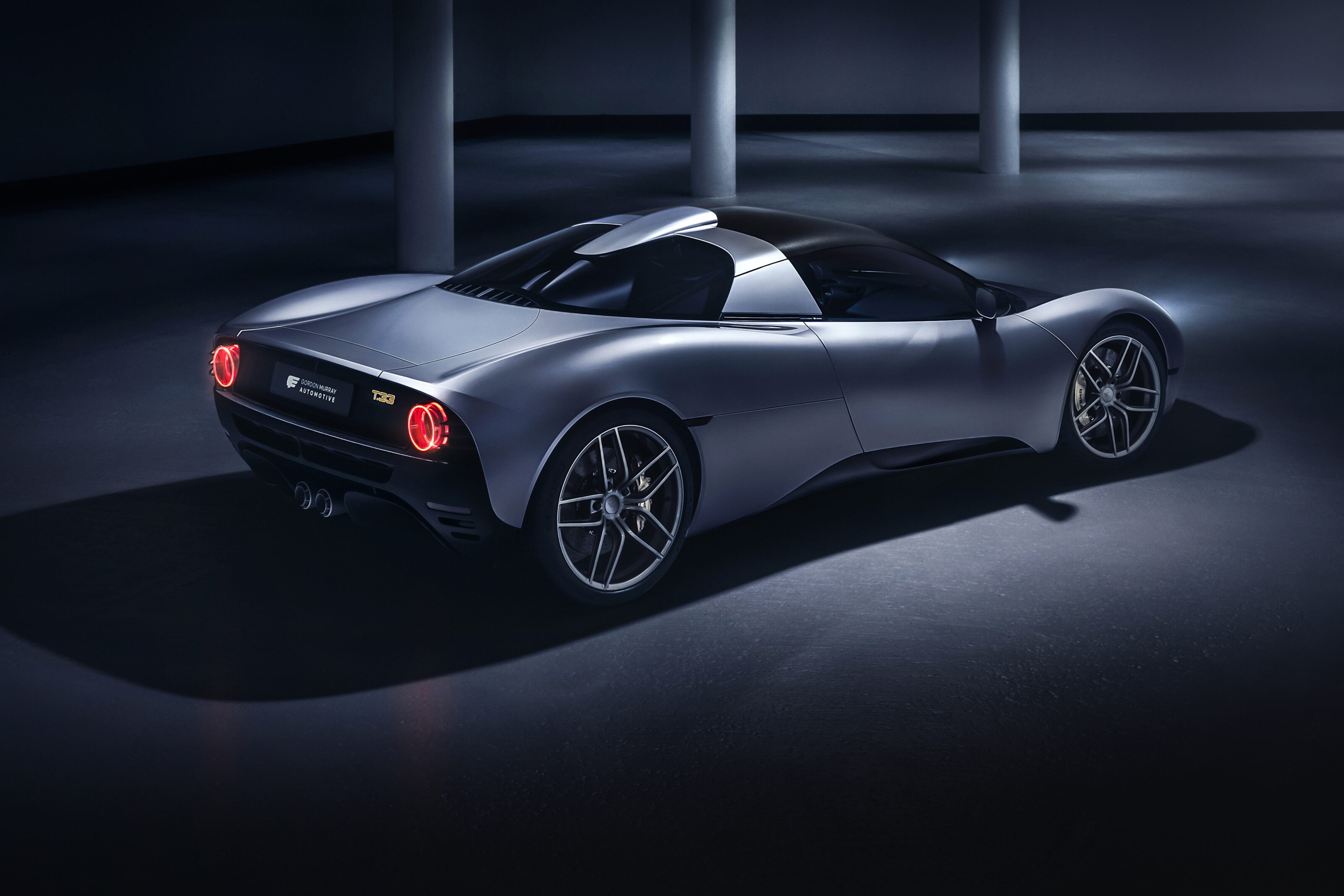
The front suspension, steering rack, and other ancillaries are located via single aluminium casting, which Murray won’t describe in detail other than to hint it’s similar in concept to the organic Bionicast structure used at the rear of the Mercedes-Benz EQXX concept. Other than its ultra-light weight, the major advantage of using a single casting is that all the mounting points can be accurately located via CNC machining.
Behind the cabin, the engine is supported by aluminium tubes. The rear suspension is bolted directly to the transmission, and although the engine is rubber mounted to reduce noise, vibration and harshness, an ingenious trapezoidal link setup is used to lock the entire powertrain into place when subjected to loads through the rear wheels.
The T.33 is light, as you’d expect of a Gordon Murray car. Target weight is just 1090kg, a mere 100kg or so more than the T.50, despite the car being engineered to be built in both left- and right-hand drive and meeting all US and European crash regulations. Among other things, that means the T.33 doesn’t need the massive brakes, wheels or tyres that are part and parcel of most modern supercars.
Brakes comprise relatively modest 370 millimetre diameter carbon-ceramic rotors and six-piston calipers up front, and 340mm units with four-piston calipers at the rear. Tyres are 235/35 Michelin Pilot Sport 4s on 19-inch forged alloy wheels up front, and 295/30 items on 20-inch rims at the back. Power steering is by way of a new hydraulically assisted system specially developed for the car.
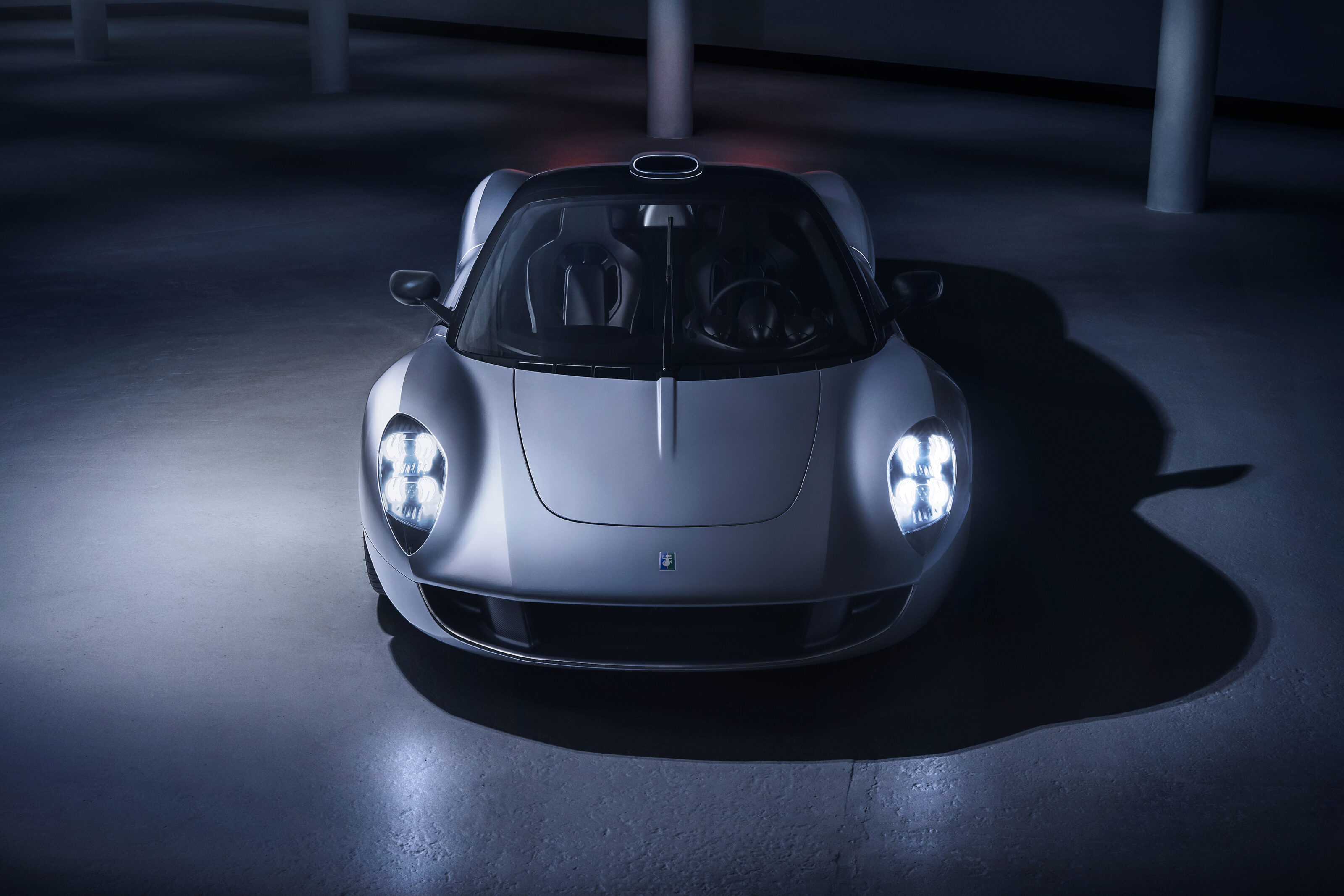
The T.33 is relatively softly sprung, another Gordon Murray trait. “I never do stiffly sprung cars,” Murray says. “I just don’t like them. So, if you are going to drive the T.33 on a track, you’re going to feel a bit of roll and pitch.”
For customers who want to spend most of their time pounding their cars at track days, GMA will offer a sportier suspension setup. “The cars are so hand-built, we can do virtually anything,” he adds.
The T.33 is about the the same length overall as a Porsche 718 Cayman, even though its roofline is 139mm lower, and its 2735mm wheelbase is a hefty 260mm longer. It’s compact, but capacious – in addition to being able to accommodate two cases in its full width frunk, the T.33 can also carry two each in either side of the car, in compartments between the door opening and the rear wheel. To access, the entire rear quarter panels are hinged at the rear.
“I didn’t want any unsightly body shut lines across the lovely rear muscle haunch,” Murray says. “So, we agonised for weeks and then I had a light bulb moment. I thought, ‘Well, you’ve got the shut lines all the way around the outside of the body panel, why don’t we just open the whole thing?’ Everybody threw their hands up in horror, of course, especially the body engineers, but they came up with some very clever solutions for the latching and the hinging.”

The T.33’s clean and simple surfaces are a by-product of the aerodynamic trickery that’s out of sight, under the car.
This includes two diffusers at the front and a revised version of the T.50’s stepped rear diffuser layout aft of the cockpit.
While testing the T.50, Murray’s team found the unique stepped rear diffuser, which had been designed to work in conjunction with the fan drawing air through it, delivered 30 per cent more downforce than expected with the fan switched off. Combined with the two-thirds total downforce developed by the front diffusers, the innovative rear diffuser means the T.33 doesn’t need a splitter protruding from underneath the front air intake.
“It was a happy accident,” Murray admits. “But it means most of the downforce is developed at the front of the rear diffuser, near the car’s centre of gravity.” The only active aero device on the car is a rear wing that tilts to maintain balance at high speed, and flicks to near vertical under braking.
Like the T.50, the GMA T.33 has been designed to celebrate lightweight and ultimate driving thrills. But it’s also been designed to have the ride quality, ground clearance and luggage capacity that allows it to be driven every day.
“I could see myself using one all the time,” says Murray, whose current daily driver is an Alpine A110. “If you had to have only one supercar, the T.33 is it.”
We recommend
-
 Features
Features“You don’t have to be a boy to like fast cars”
Meet Ella Podmore – at just 25-years-old she is McLaren’s sole materials engineer showing just how much women have to offer to the auto industry
-
 News
NewsGordon Murray Automotive T.33 set to debut this month
A ‘more accessible’ supercar is on its way from GMA
-
 Features
FeaturesWho is Gordon Murray? About the man behind the GMA T.50
The designer’s career highlights are more than just the McLaren F1

